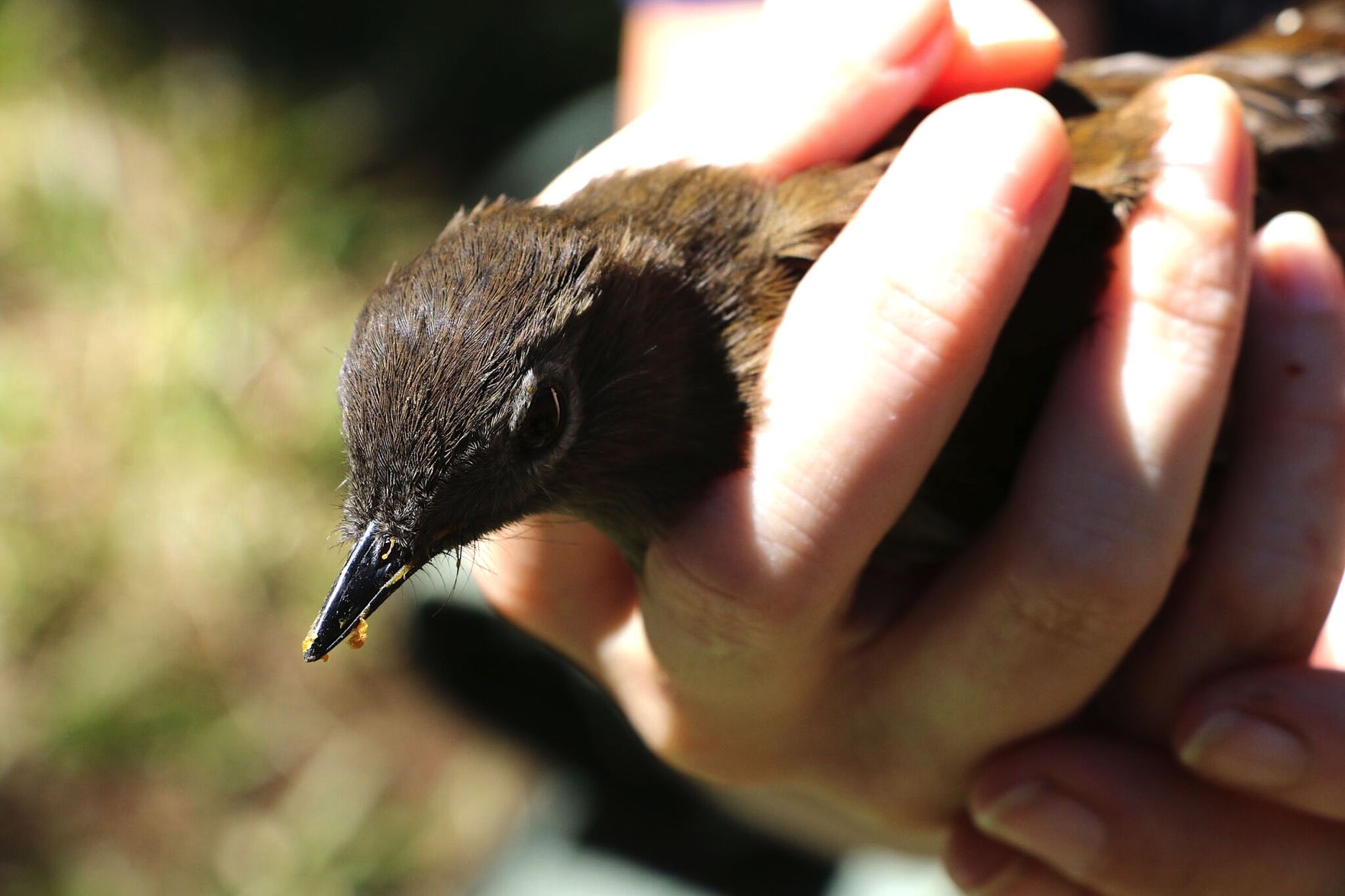LIHUE — Dozens of times, over the course of nearly two decades, staff from one of two bird conservation centers on Maui and Hawaii island boarded a Hawaiian Airlines plane with either a small wooden box or a large, six compartment crate.
For each trip to Kauai they were transporting captive raised puaiohi, 240 in all, to release them to the remote, rugged Alakai Plateau below Mt. Waialeale.
Monday, the two-compartment box carried onto the plane by an employee of the San Diego Zoo Global’s Maui Bird Conservation Center, got a lot of attention from passengers.
Is it a dog? Is it a cat? No, the worker explained, it is a puaiohi, one of a half dozen rare, endangered forest birds found only in the montane forests of Kauai.
San Diego Zoo Global’s Maui Bird Conservation Center officially ended its puaiohi captive breeding program a year ago, with the release of 15 birds.
On Monday, Jennifer Holler, research associate in recovery ecology, carried the final two puaiohi to Kauai to be released because they were underweight and not quite ready for release a year ago.
For Holler, it was a moment she won’t forget anytime soon.
“This is very exciting for me,” she said. “I started working with this species more than 10 years ago, and we all hope this final step in the recovery program means the puaiohi will continue to thrive in the wild.”
Dr. Lisa “Cali” Crampton, project leader for the Kaua‘i Forest Bird Recovery Project, said the puaiohi captive-breeding program was continued for 18 years and initially had great success.
“When we started it’s estimated there were fewer than 300 of the thrush left on Kauai,” she said.
There is now a stable population of about 500 puaiohi on Kauai, she said.
Crampton said there was evidence that in recent releases the captive-raised puaiohi were not doing as well as experts had hoped. Many of the birds died within several months, likely eaten by predatory rats.
“The releases were not getting good traction, so these were not considered a good tool for bolstering the wild population,” Crampton said. “It was a fairly expensive strategy for changing the recovery trajectory, so we decided, with the puaiohi population remaining stable, it was best to spend limited funds on rodent control and focus on two other species that are in dire straits due to dramatic population declines.”





